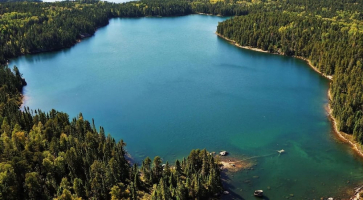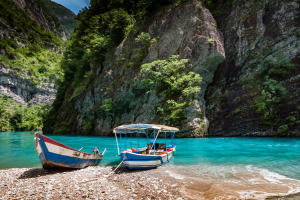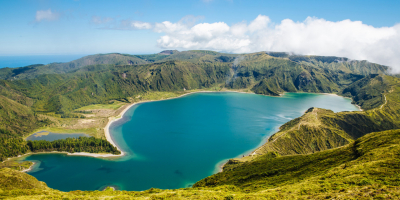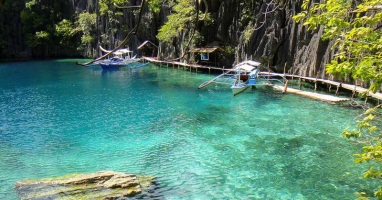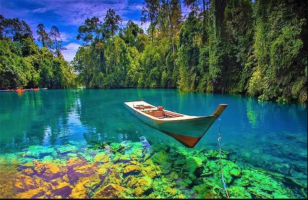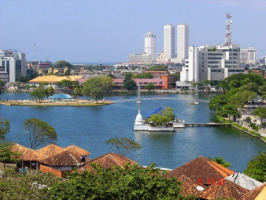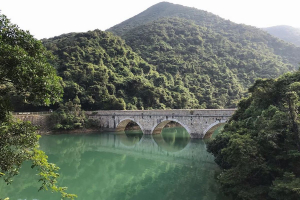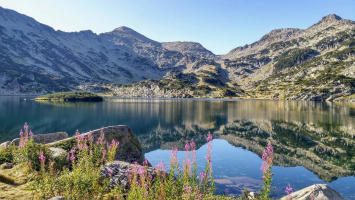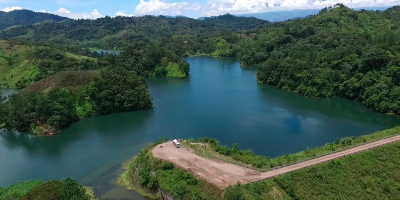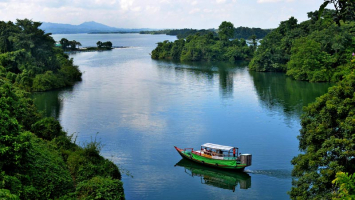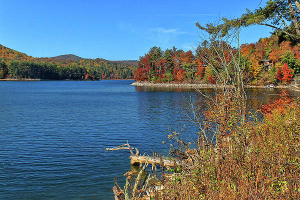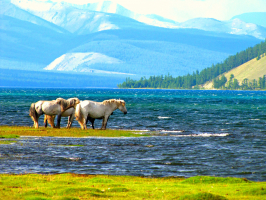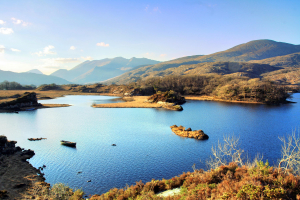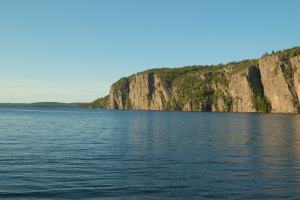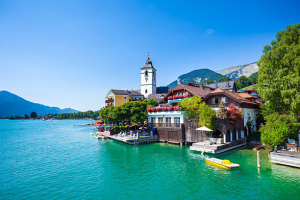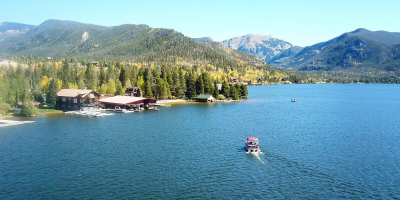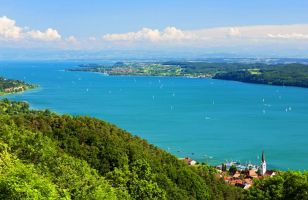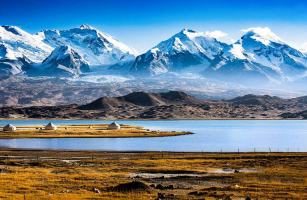Top 13 Most Beautiful Lakes in Australia
The lakes are the ideal summer destination for those who want a place to relax and cool off without descending to cramped beach destinations. In a beautiful ... read more...country like Australia, there is no shortage of beautiful lakes. Let's join Toplist to discover the most beautiful lakes in Australia!
-
A sizable monomictic crater lake called the Blue Lake is situated in a dormant volcanic maar that is a part of the Mount Gambier maar complex. One of four crater lakes on Mount Gambier Maar, the lake is located close to Mount Gambier in the Limestone Coast region of South Australia. Only two of the four lakes are still present, while the other two dried up as the water table plummeted over the past 30 to 40 years.
Though to have an average depth of 72 meters, Blue Lake can occasionally reach heights of 75 meters. The lake itself measures 1,087 by 657 m, while the crater rim is 1,200 by 824 m in size. The lake's surface lies 17 m below the level of the town's main street. The town receives its drinking water from Blue Lake.
The name of this body of water, which is close to Mount Gambier, comes from the water's vivid blue hue. Throughout the fall and winter, the water seems to turn a shade of grey. Residents in the neighborhood can take advantage of the lake's fresh drinking water harvest. On the edge of the lake is a tiny memorial to the well-known poet and politician Adam Lindsay Gordon.
Location: Mount Gambier, South Australia
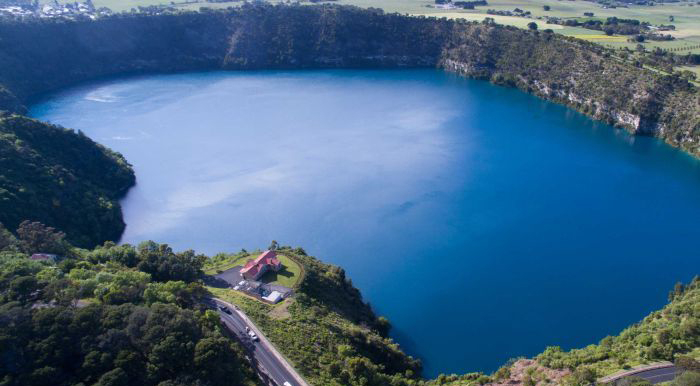
Photo: vovankienthuc.com 
Photo: ivivu.com -
Dove Lake which is one of the most beautiful lakes in Australia, is a corrie lake located close to Cradle Mountain in Tasmania, Australia's central highlands. It is located in the National Park of Cradle Mountain and Lake St. Clair. A lot of people visit the lake, which is surrounded by well-kept walking pathways that go up to Cradle Mountain. Gustav Weindorfer, a well-known local, gave it that name in honor of a Van Diemen's Land Company officer.
Dove Lake was created by glacial, the same as many other lakes in the area. The Tasmanian deciduous beech, tussock grasses, snow gums, and pencil pines make up the distinctive environment. Numerous wombats, echidnas, pademelons, and tiger snakes are among the creatures that roam the lake's banks.
This lake is encircled by mountains and a lush landscape. The spectacular Cradle Mountain looms majestically above the lake and provides a beautiful backdrop. People can easily explore the region thanks to the walking pathways that are positioned near the lake. The region around the lake is home to tiger snakes and wombats.
Location: Cradle Mountain-Lake St Clair National Park, Central Highlands, Tasmania
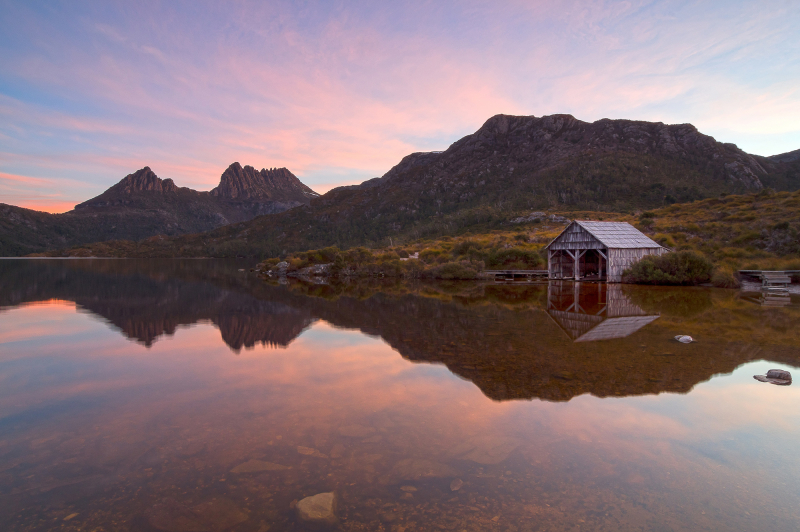
Photo: parks.tas.gov.au 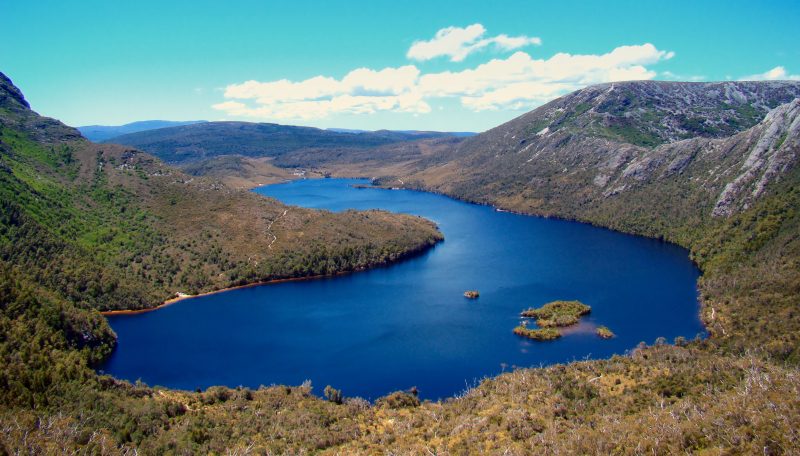
Photo: Wikipedia -
About 100 kilometers southeast of Adelaide, in South Australia, between the Murray and Mallee and Fleurieu and Kangaroo Island districts, is the freshwater lake known as Lake Alexandrina. The lake drains into the Great Australian Bight through the short, shallow hole known as Murray Mouth after bordering the smaller Lake Albert (together known as the Lower Lakes) and a coastal lagoon named The Coorong to its southeast.
The lake region remained fresh over 95% of the time with typical river inflow, despite the fact that it was previously connected to the ocean by a body of water. There would be very little mixing of fresh and salt water, either vertically in the water column or laterally across the flow stream, as a result of salt water inflows from the ocean.
Many people in the Mackenzie region are unaware of the beauty and rarity of Lake Alexandrina, a stunning example of a South Island high country lake. Lake Alexandrina's long and narrow shape is put into perspective when viewed from the summit of Mount John. The lake is spring-fed, surrounded by the region's tawny-colored dry tussock, and encircled by high mountain ranges.
Location: between the Fleurieu and Kangaroo Island and Murray and Mallee regions of South Australia
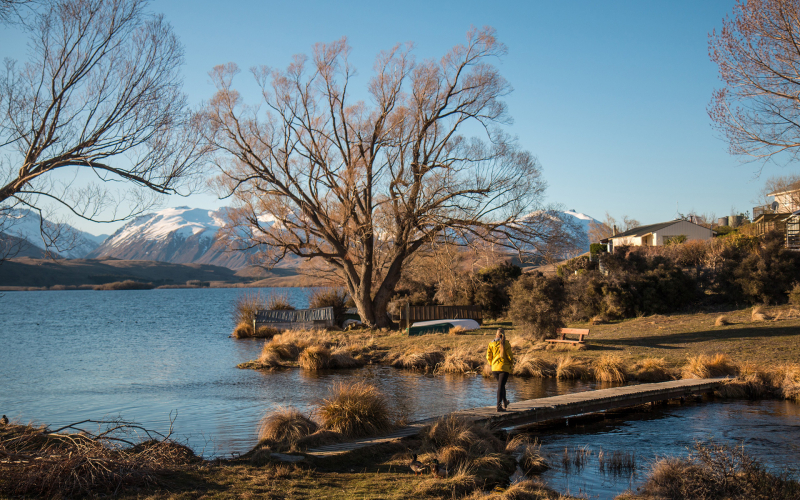
Photo: mackenzienz.com 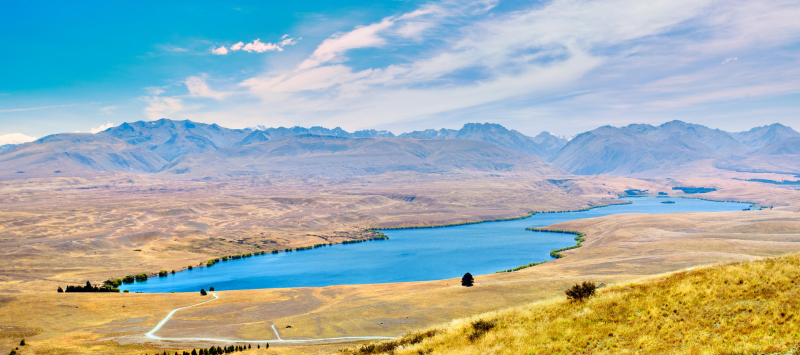
Photo: trip.com -
Queensland, Australia's Lake McKenzie (Boorangoora) is perched on K'gari. The Great Sandy National Park contains the lake. 6.2 kilometers to the southeast of Kingfisher Resort sits the lake. It is up to 930 meters broad and 1,200 meters long. It covers an area of about 150 hectares. The lake's water is so pure that many species cannot live in it, while the sands surrounding the lake are made of pure, white silica. Picnic spaces and restrooms are available for guests near the lake.
Lake McKenzie is one of the most beautiful lakes in Australia. The lake's surrounding pristine white sand is arguably its most beautiful feature. It's not just wonderfully lovely to look at; it's also unusually soft. This serves as a sort of filter to keep the water clear, but it also means that because the water is so pure, no animal life can survive in it. Additionally, it implies that your skin benefits from its natural exfoliation properties!
Visit the lake just as the sun is rising or setting for the greatest views, as the low light really brings out the hues of blue and green in the water.
Location: Queensland, Australia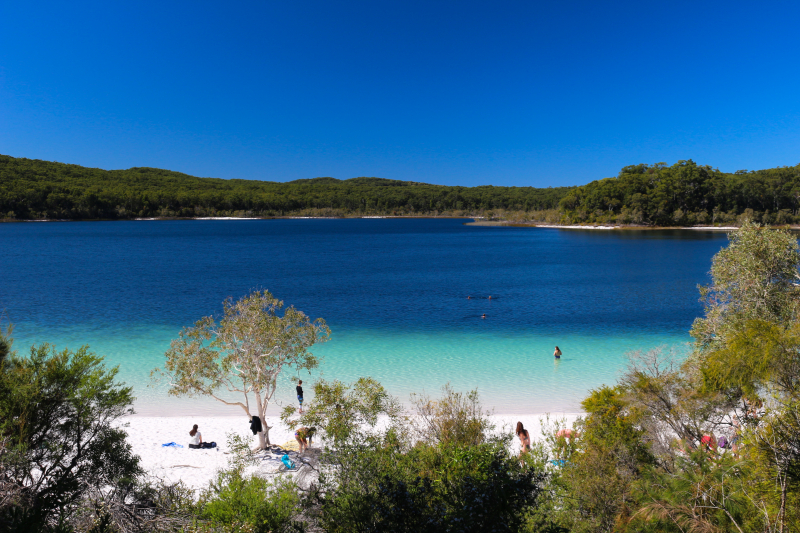
Photo: wikipedia 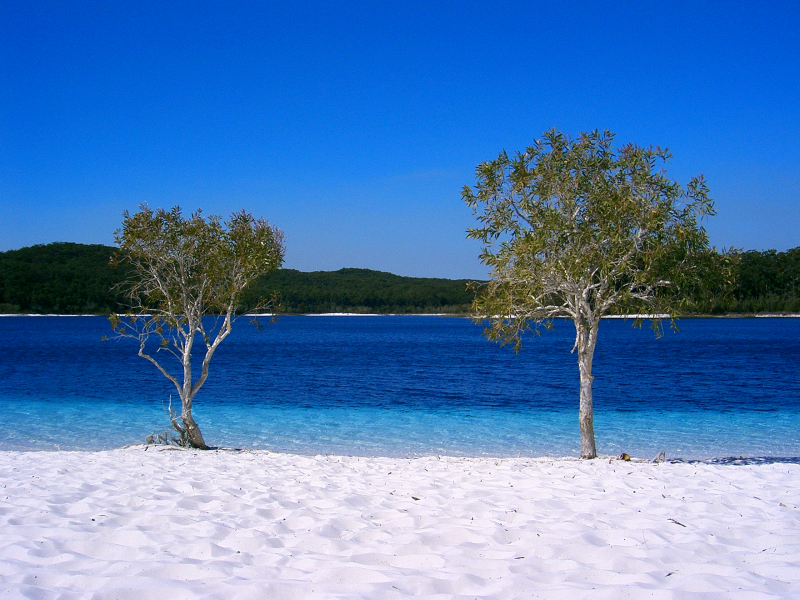
Photo: simple wikipedia -
Located in New South Wales, Australia's Snowy Mountains, Lake Albina is a glacier lake. The Australian Alps National Park and Reserve and Kosciuszko National Park both contain the lake.
The tallest mountain in Australia, Mount Kosciuszko, is about 2.5 kilometers north of Lake Albina. The lake's 6,600 square meters are roughly 500 meters long and 50 meters wide. It is situated in a ravine, with Mount Lee and Mount Northcote to the east, Mount Lee to the west, and Mount Townsend to the south. Lake Albina empties into the Geehi River in the north through the canyon of Lady Northcote.
Most of the year, snowfall is visible around the lake. The area originally housed the Lake Albina Ski Lodge, a well-known ski resort. The Ski Tourers Association, subsequently known as The Australian Alpine Club, constructed the Lake Albina Ski Lodge in 1951, with a view of the lake upstream. Utilizing the unusually snowy season, the first Albina Summer Slalom Cup was staged in 1952. For at least three more years, either Mount Kosciuszko or Mount Townsend hosted summertime ski competitions.
Location: Snowy Mountains, New South Wales, Australia
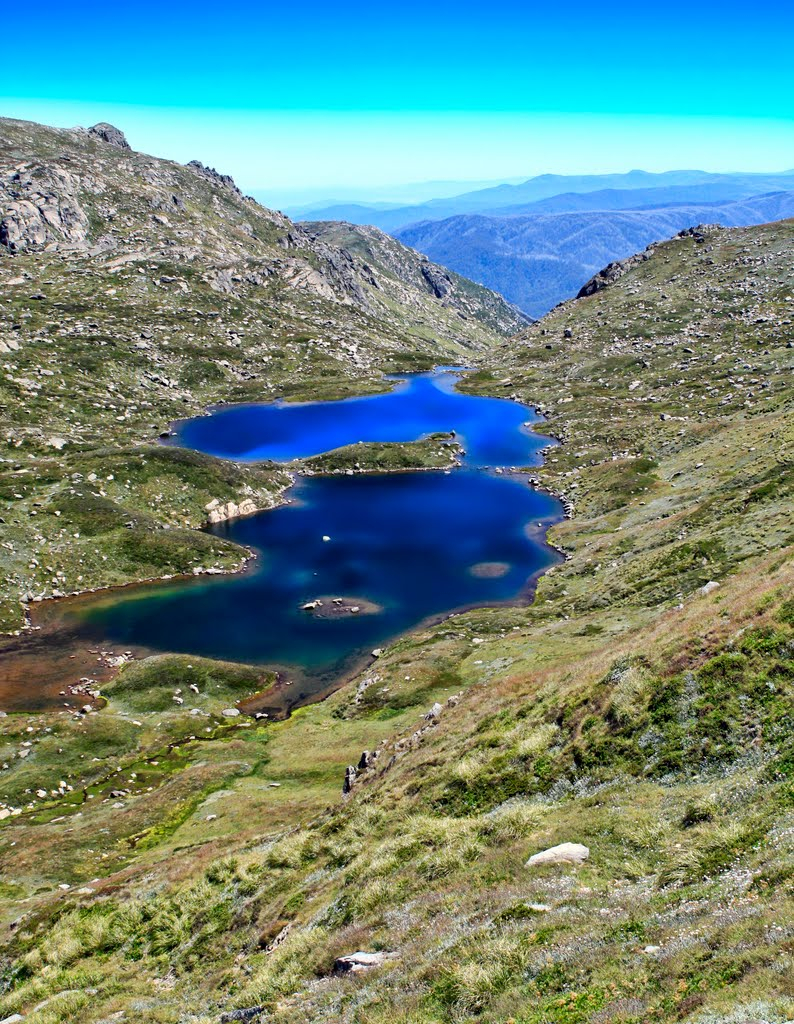
Photo: mapio.net 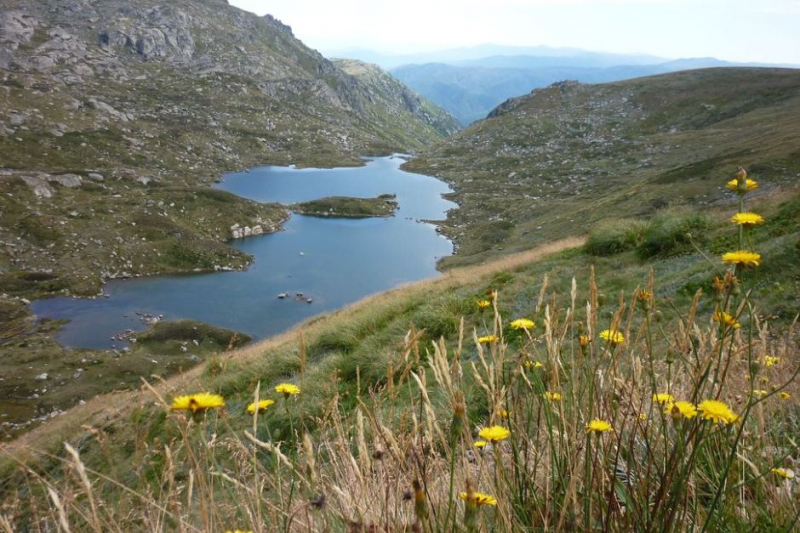
Photo: australianhistoriespodcast.com.au -
On the Atherton Tableland in Queensland, Australia, which is a part of the Wet Tropics of Queensland World Heritage Site, lies a well-known lake of volcanic origins called Lake Eacham. It is located in the Lake Eacham neighborhood of the Tablelands Region local government district.
The lake itself has been around for more than 12,000 years, and it originally began to form when molten lava ascended from the earth's center and heated the water table nearby. As a result, subsurface steam that had been confined escaped, resulting in enormous explosions and enormous earth fractures. Water started filling in the craters and fissures left by the explosions over a period of hundreds of years, and the trees that had originally bordered the region started to grow again, resulting in the serene scene that can be seen there today.
Lake Eacham and its surroundings weren't properly appreciated for their beautiful splendor until 1888, at which point the lake and a little section of the nearby jungle were designated as a scenic reserve. Following that, for more than 50 years, tourists exploited the lake as a picturesque area, offering boating and other water sports to thrill-seeking vacationers. The lake and its surrounds were designated a protected and administered National Park by the local authorities in 1934.
Location: Atherton Tableland, Queensland, Australia
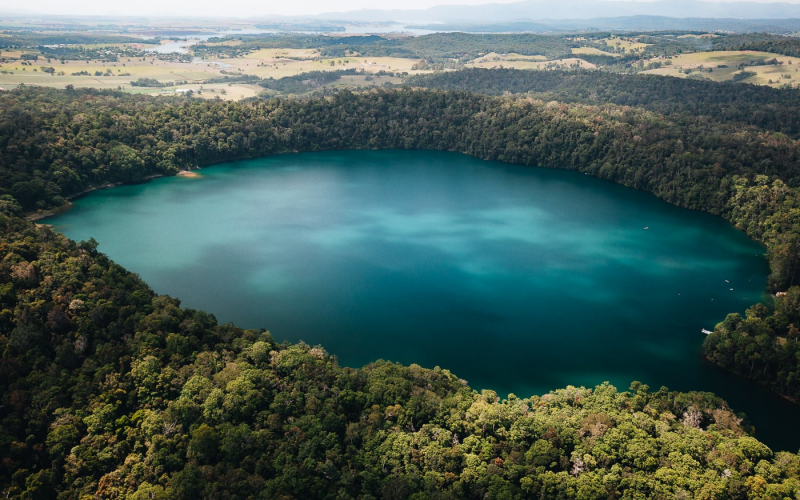
Photo: weseektravel.com 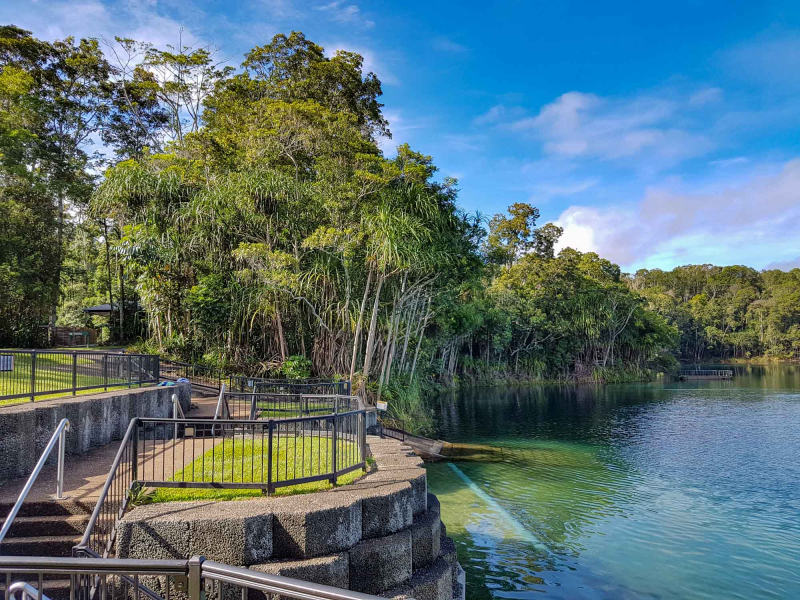
Photo: bluesummithideaway.com.au -
The Recherche Archipelago, which consists of Middle Island and other larger islands and islets, is located in the Goldfields-Esperance region off the south coast of Western Australia. Lake Hillier is a saltwater lake on the edge of Middle Island. It stands out in particular for being pink. The Southern Ocean (or, by some definitions, the Indian Ocean) and the lake are separated by a lengthy and narrow shore.
The dimensions of Lake Hillier are roughly 250 m in width by 600 m in length. The lake is surrounded by a rim of sand, a thick forest of paperbark and eucalyptus trees, and a thin strip of vegetated sand dunes separating its northern side from Middle Island's northern coast.
This lake's pink water conjures quite a distinctive image. Although scientists and environmentalists are still trying to figure out why the lake appears pink, the water is thought to be safe for people to drink. According to some scientists, the water's pink color is caused by a high concentration of bacteria and algae along with a deficiency in nutrients. The lake is surrounded by a substantial eucalyptus tree forest and white beaches. On Middle Island, close off Western Australia's southern coast, you can find this interesting body of water.
Location: Goldfields-Esperance, Western Australia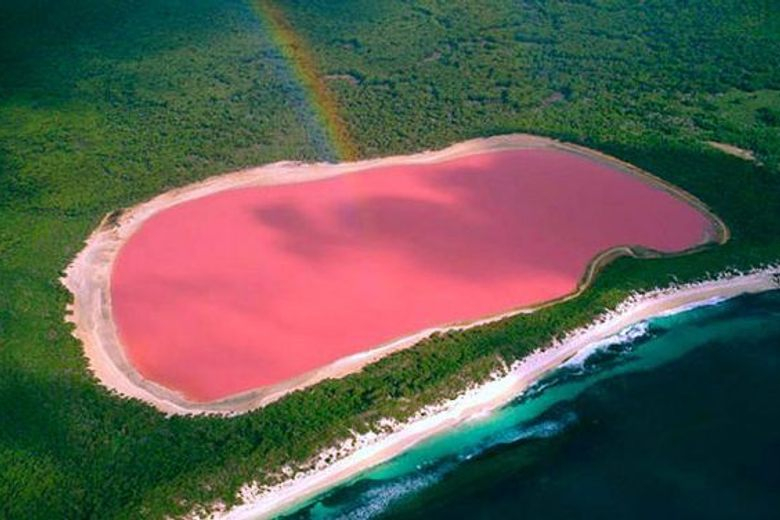
Photo: atlasobscura.com Video: https://www.youtube.com/watch?v=cUfSn9utjMo -
In the central west of New South Wales, Australia, close to Orange, there is a man-made reservoir called Lake Canobolas. The lake was finished in the early 1900s, provided water to Orange from 1918 to 1957, and has been utilized for recreation since the 1970s.
The lake's surroundings have undergone substantial rehabilitation over many years, and as a result, numerous kinds of waterfowl and native animals can be found there. A platypus may occasionally be seen surfacing on the quiet waters after diving for food in the lake's silty bottom, or a wallaby may be seen browsing or an echidna looking for food.
This artificial lake, which was finished in the 20th century, is the perfect location for a picnic or a tranquil afternoon amidst nature's quiet. The lake is located in Orange, New South Wales, not far from the city. The area around the lake is home to Mount Canobolas, a dormant volcano. The lake was originally a source of drinking water for the community. Lake Canobolas is one of the most beautiful lakes in Australia.
Location: Orange, New South Wales, Australia
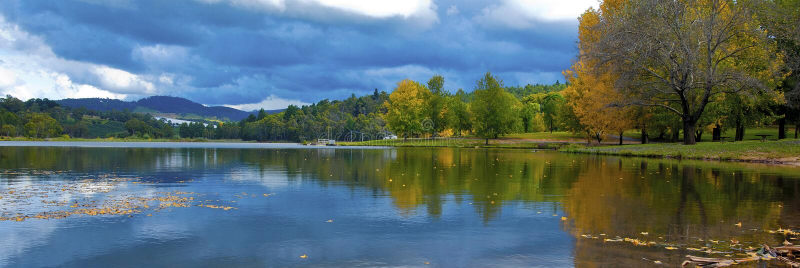
Photo: dreamstime.com 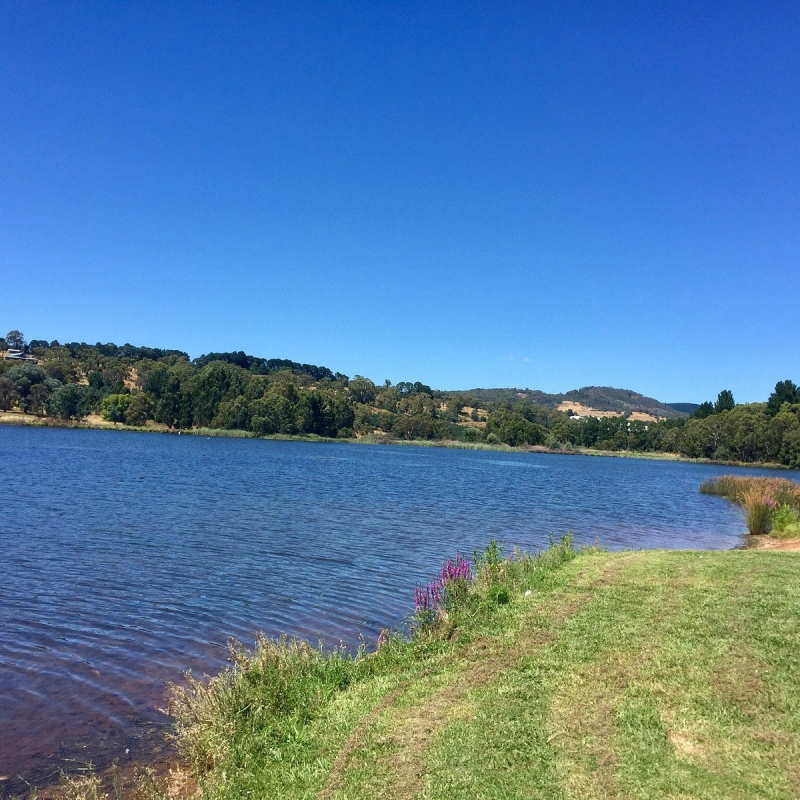
Photo: tripadvisor.com -
Lake Cootharaba is a body of water on the Noosa River in the Queensland, Australia, region of Noosa North Shore in the Shire of Noosa. Given that it is 20 kilometers from Noosa, the Everglades, a major tourist destination, may be reached through this location. The hamlet of Boreen Point and the smaller camping area of Elanda Point are the main entrance points to the lake.
The size of Lake Cootharaba is roughly 10 km long by 5 km wide, with a depth of 1.5 m on average. Despite being close to the Pacific Ocean, the lake does not empty into it. Instead, the Noosa River enters through the Everglades Wetlands in the north and leaves by a navigable canal in the south to reach the sea at Noosa Heads, 12 km to the southeast. The Great Sandy National Park's southern part surrounds the lake to the north, east, and south, and the agricultural area to the west.
People who want to spend the day swimming, sailing, and engaging in other water sports frequently visit this lake. This lake is favored by ardent anglers due to the amount of fish. The lake is located in the Great Sandy National Park's southern region.
Location: 15 km (9.3 mi) North West of Noosa, Queensland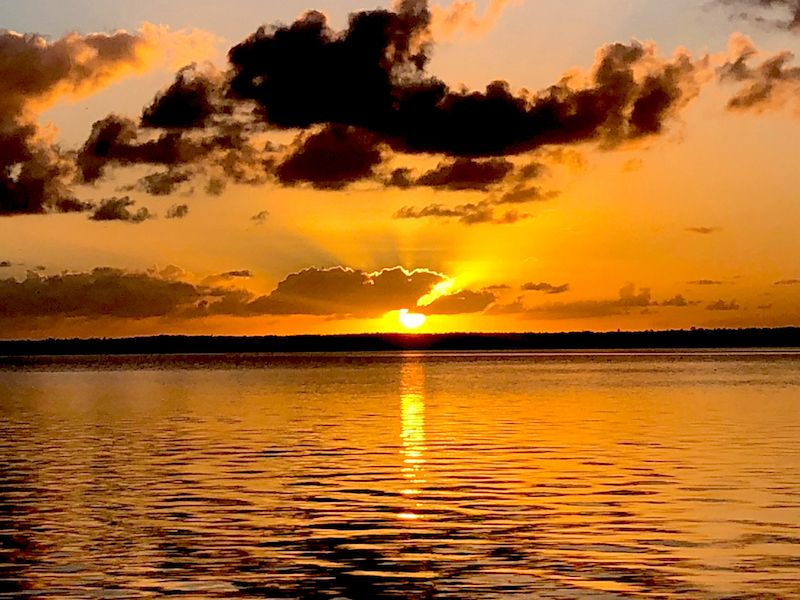
Photo: sunshinebeachaccommodation.com.au 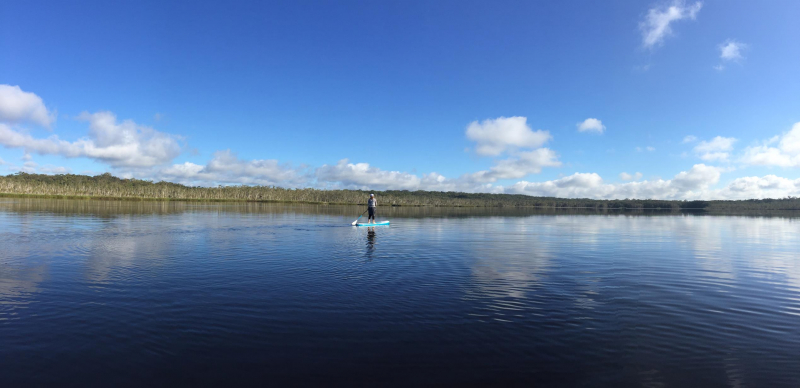
Photo: adventure.sunshinecoast.qld.gov.au -
The next position on the list of the most beautiful lakes in Australia is Lake Jindabyne. A significant ungated rockfill embankment dam, Jindabyne Dam spans the Snowy River in Australia's Snowy Mountains. One of the sixteen major dams that make up the Snowy Mountains Scheme, a sizable hydroelectricity and irrigation complex built in south-east Australia between 1949 and 1974 and currently managed by Snowy Hydro, the dam's primary function is the generation of hydropower.
When winter arrives, the lake is covered in snow and makes for a fantastic viewing location as you pass through the snowfields. The lake is a favorite with boaters after the snow melts and the temperature rises, and you can easily spend a few days swimming in its refreshing water and exploring the area's numerous hiking paths. Popular sailing and fishing spots include Lake Jindabyne. A resident population of Atlantic Salmon, Brook Trout, and Rainbow Trout can be found in the body of water, which is one of New South Wales's major freshwater reservoirs. Additionally, Lake Jindabyne has a reputation as one of Australia's top spots for trout fishing.
Location: New South Wales, Australia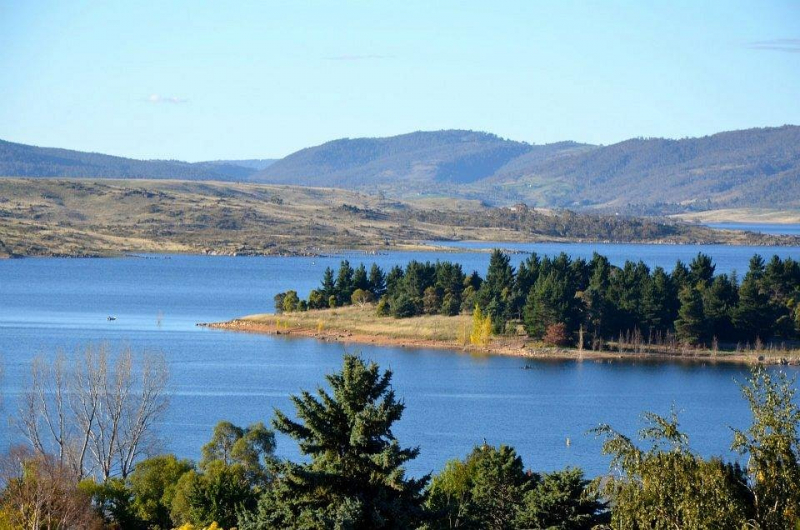
Photo: tripadvisor.com 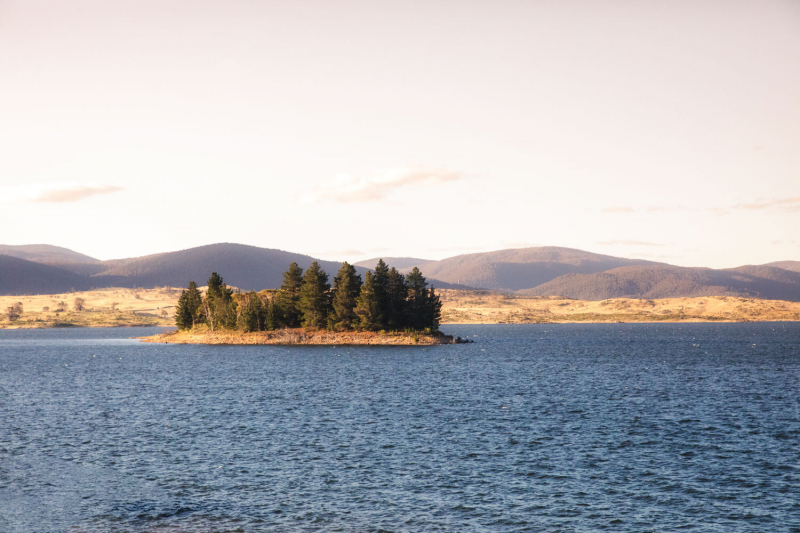
Photo: walkmyworld.com -
By volume, Lake Argyle is the largest freshwater man-made reservoir in Western Australia and the second largest in all of Australia. The reservoir is close to the East Kimberley town of Kununurra and is a part of the Ord River Irrigation Scheme. Large portions of the Shire of Wyndham-East Kimberley, located on the Kimberley Plateau about 80 km (50 mi) inland from the Joseph Bonaparte Gulf and close to the Northern Territory boundary, were submerged by the lake.
Dravo Corporation finished the Ord River Dam's construction in 1971. The following year, the dam's official opening took place. The dam wall is 98 meters tall and 335 meters long. When comparing the size of the dam wall to the volume of water stored, the earth-fill alone dam wall at Lake Argyle is the most effective dam in Australia. The lake was given the name Argyle Downs after the land it partially drowned.
Lake Argyle, which locals refer to as the Jewel of the Kimberley, is dotted with islands that resemble gems. Due to the warm water, which stays around 30°C for most of the year, families won't have to worry about enticing children into the pool. Go on a bushwalk around the lake to see wildlife, including native birds and rock wallabies. Although freshwater crocodiles can be found in Lake Argyle, they are typically cautious and have no history of attacking people.
Location: near KununurraEast Kimberley, Western Australia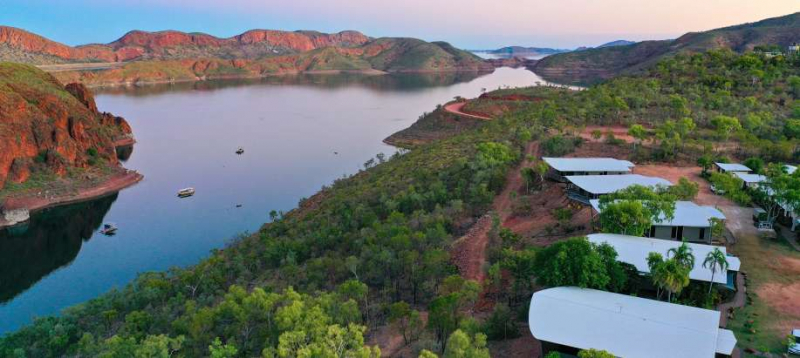
Photo: discoveryholidayparks.com.au 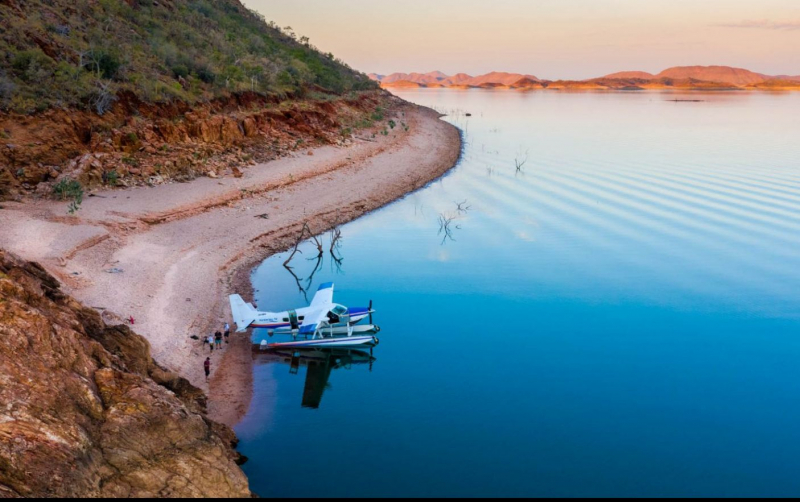
Photo: kimberleyairtours.com.au -
On the western Eyre Peninsula, close to the Nullarbor Plain, lies a salt lake called Lake MacDonnell. Penong is the closest town. On the largest gypsum deposit in the southern hemisphere, it is the location of a former salt mine as well as the largest gypsum mine in Australia.
Lake MacDonnell, a pink lake in South Australia's Eyre Peninsula, is unlike any other area. Lake MacDonnell is divided by a road, with pink water on one side and teal water on the other. Those who make the long journey out here call it "Watermelon Avenue" because from above it looks like the rind of a watermelon. Visit the motel or RV park at Penong if you want to stay close to Lake MacDonnell.
On clear days, the lake's high salt concentration creates the impression that it is salmon-pink in color. Pink Lake, Green Lake, and Blue Lake are located on either side of the causeway, which also has a tiny bridge connecting them. Dunaliella salina, salt-loving algae, and halobacteria, which emit carotenoid red pigments that give the water in the Pink Lake its vivid pink color, are to blame.
Location: Lake Macdonnell, Penong SA 5690, Australia
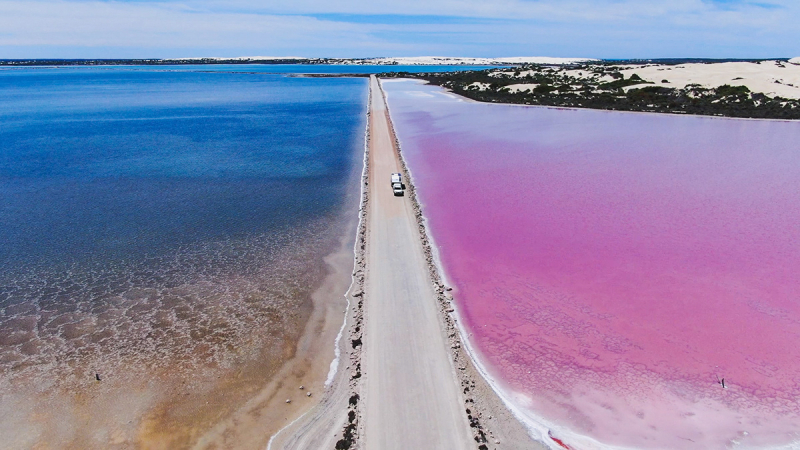
Photo: holamon.cat Video: https://www.youtube.com/watch?v=V5SyE_LoNyg -
A marine salt lake called Hutt Lagoon may be found in Western Australia's Mid West region, 2 kilometers north of the Hutt River's mouth and close to the Indian Ocean shore. A long lake called Hutt Lagoon is located near the coast in a dune swale. Between the southern sides of the lake and the seashore is where Gregory is situated. George Grey Drive, which connects Northampton and Kalbarri, follows its eastern border.
Hang out at Hutt Lagoon, a pink lagoon on Western Australia's Coral Coast with the color of a strawberry milkshake. This lake changes colors throughout the day and year, from soft pink to vivid bubblegum. Hutt Lagoon does not allow swimming, yet the lake's edge is only a short distance from the ocean. On the journey between Port Gregory and Kalbarri, the waters of Hutt Lagoon can occasionally be a stunning shade of red, lilac, or even brilliant bubblegum pink. Before sunset, go outside and observe how the colors change.
The charming fishing community of Port Gregory is tucked away between Hutt Lagoon and the seashore. Choose from farm stays, chalets, beach cottages, and the trailer park for your overnight accommodation after picking up refreshments at the general store.
Location: Mid West region of Western Australia
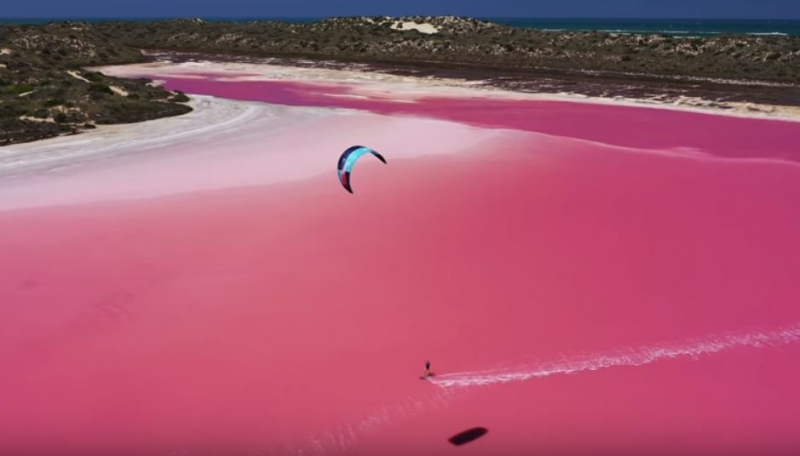
Photo: ngoisao.vnexpress.net Video: https://www.youtube.com/watch?v=AzvytjfdMzQ
















